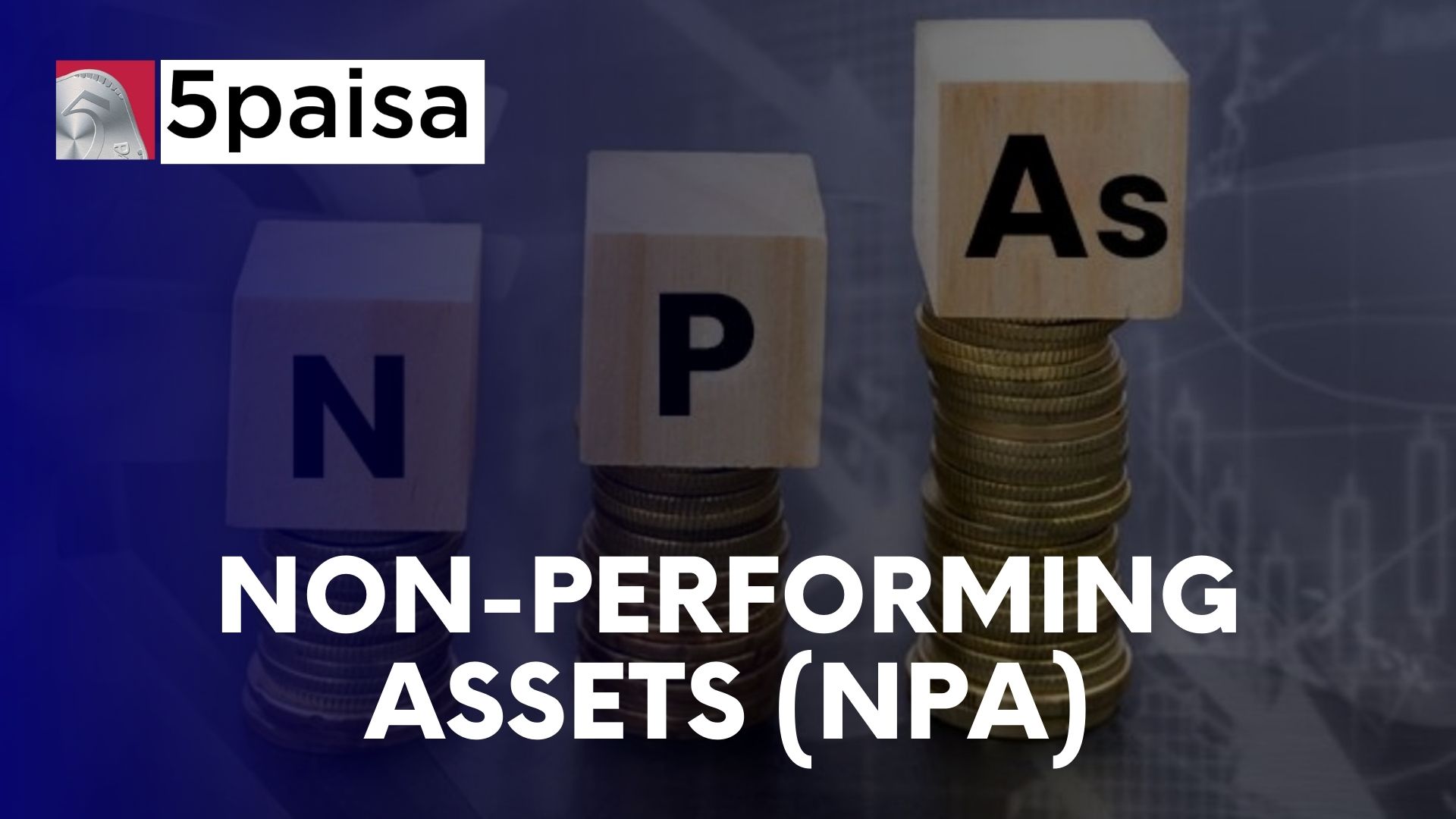Non-Performing Assets (NPA)
5paisa Research Team
Last Updated: 25 Apr, 2023 10:50 AM IST

Content
- Introduction
- What is NPA in Banking?
- How Non-Performing Assets (NPA) Work?
- Categories of Non-performing assets
- NPA Provisioning
- NPA in Absolute Numbers
- NPA in ratio
- Example of NPA
- Impact of NPA on Operations
Introduction
Banking has various tools to measure its users' stability, performance, and credibility. Any slight imbalance could harm the bank's reputation. Non-Performing Assets (NPA) are one way to assess the strength and stability of a bank's finances.
The non-performing assets definition refers to the default loan classification by banks and other financial institutions. These loans' interest and principal payments have been past due for a considerable time. In India, a loan becomes a non-performing asset after 90 days. This blog explains what is non-performing assets in detail.
More About Generic
- What is a Virtual Payment Address (VPA) in UPI?
- Best Swing Trading Strategies
- What Is FD Laddering?
- What Credit Score is Needed to Buy a House?
- How to Deal with Job Loss?
- Is 750 a good credit score?
- Is 700 a Good Credit Score?
- What is Impulse Buying?
- Fico Score vs Credit Score
- How to remove late payments from your credit report?
- How to Read Your Credit Card Statement?
- Does Paying Car Insurance Build Credit?
- Cashback vs Reward Points
- 5 Common Credit Card Mistakes to Avoid
- Why Did My Credit Score Drop?
- How to Read a CIBIL Report
- How Long Does It Take to Improve Credit Score?
- Days Past Due (DPD) in CIBIL Report
- CIBIL Vs Experian Vs Equifax Vs Highmark Credit Score
- 11 Common Myths about CIBIL Score
- Tactical Asset Allocation
- What is a Certified Financial Advisor?
- What is Wealth Management?
- Capital Fund
- Reserve Fund
- Market Sentiment
- Endowment Fund
- Contingency Fund
- Registrar of Companies (RoC)
- Inventory Turnover Ratio
- Floating Rate Notes
- Base rate
- Asset-Backed Securities
- Acid-test Ratio
- Participating Preference Shares
- What is Expenses Tracking?
- What is Debt Consolidation?
- Difference Between NRE & NRO
- Credit Review
- Passive Investing
- How To Get Paperless Loans?
- How To Check CIBIL Defaulter List?
- Credit Score Vs CIBIL Score
- National Bank for Agriculture and Rural Development (NABARD)
- Statutory Liquidity Ratio (SLR)
- Cash Management Bill (CMB)
- Secured Overnight Financing Rate (SOFR)
- Personal Loan Vs Business Loan
- Personal Finance
- What is Credit Market?
- Trailing Stop Loss
- Gross NPA vs Net NPA
- Bank Rate vs Repo Rate
- Operating Margin
- Gearing Ratio
- G Secs - Government Securities in India
- Per Capita Income India
- What is Term Deposit
- Receivables Turnover Ratio
- Debtors Turnover Ratio
- Takeover
- IMPS Full Form in Banking
- Redemption of Debentures
- Rule of 72
- Institutional Investor
- Capital Expenditure and Revenue Expenditure
- What is Net Income
- Assets and Liabilities
- Gross Domestic Product (GDP)
- Non-Convertible Debentures
- Cost Inflation Index
- What Is Book Value?
- What Are High Net Worth Individuals?
- Types of Fixed Deposits
- What Is Net Profit?
- What is Neo Banking?
- Financial Shenanigans
- China Plus One Strategy
- What is Bank Compliance?
- What Is Gross Margin?
- What Is an Underwriter?
- What is Yield To Maturity (YTM)?
- What is Inflation?
- Types of Risk
- What Is the Difference Between Gross Profit and Net Profit?
- What is a Commercial Paper?
- NRE Account
- NRO Account
- Recurring Deposit (RD)
- What is Fair Market Value?
- What Is Fair Value?
- What is NRI?
- The CIBIL Score Explained
- Net Working Capital
- ROI - Return on Investment
- What Causes Inflation?
- What is Corporate Action?
- What is SEBI?
- Fund Flow Statement
- Interest Coverage Ratio
- Tangible Assets Vs. Intangible Assets
- Current Liabilities
- Current Ratio Explained - Examples, Analysis, and Calculations
- Restricted Stock Units (RSU)
- Liquidity Ratio
- Treasury Bills
- Capital Expenditure
- Non-Performing Assets (NPA)
- What is a UPI ID? Read More
Disclaimer: Investment in securities market are subject to market risks, read all the related documents carefully before investing. For detailed disclaimer please Click here.
Frequently Asked Questions
When a bank declares an NPA, the bank gives a notice period of 60 days before starting the legal procedure.
The bank will offer an option of a one-time loan settlement to settle an NPA account.
The formula to calculate NPA is as below.
Net NPA = Gross NPA - Provisions
An ideal NPA percentage that every bank should maintain is below 1%.



